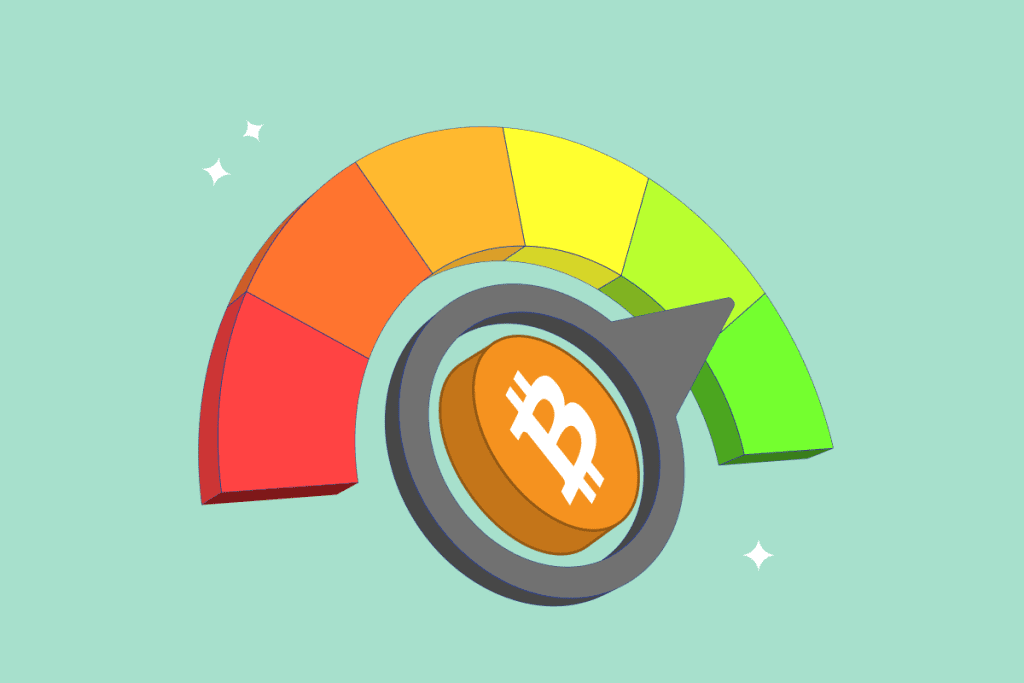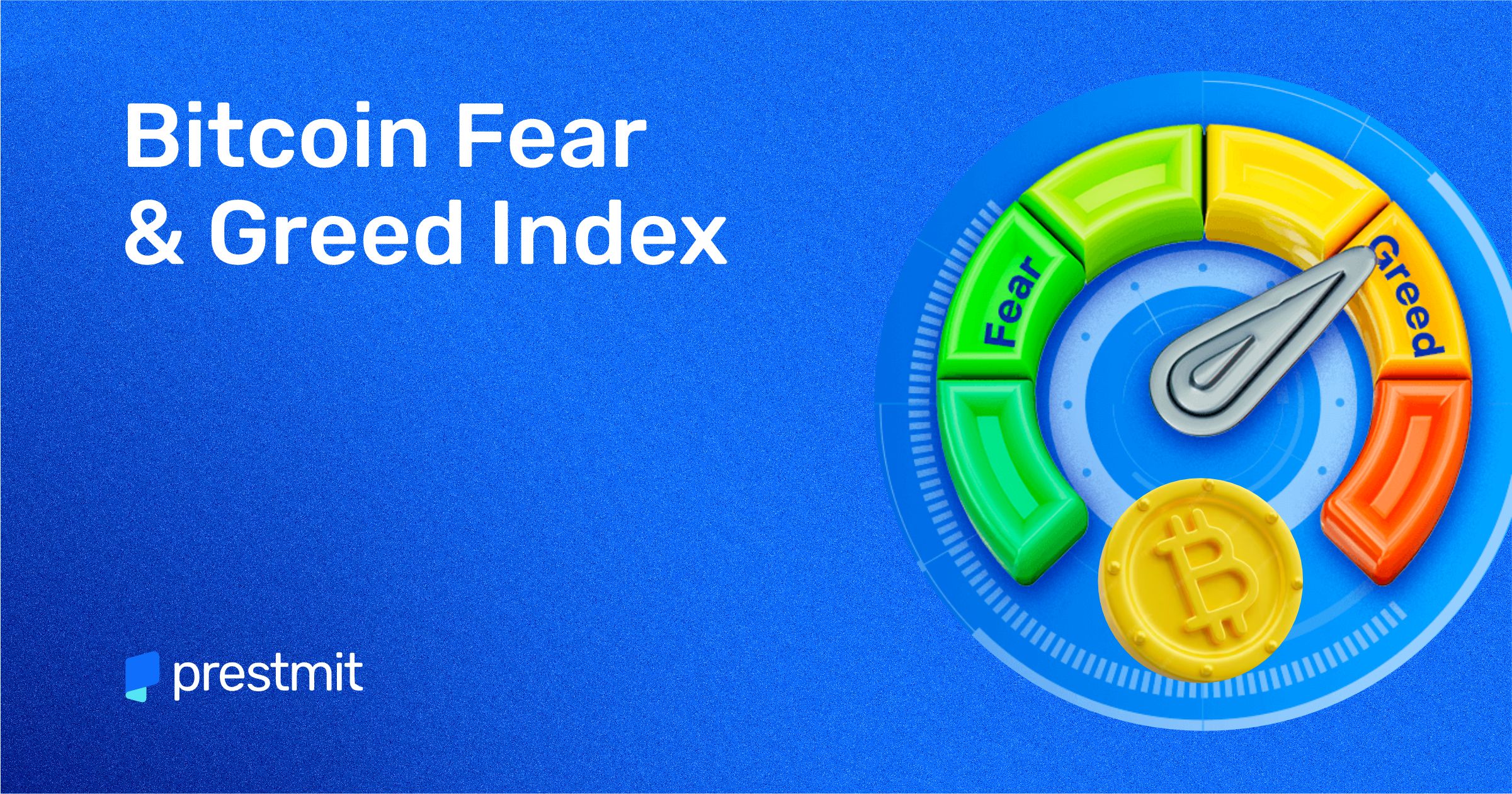Knowing how to capitalise on the Bitcoin fear and greed index will make you a master investor. First, you need to understand that the fear and greed index are true indicators of the mood of the crypto market. In this article, you’ll see just how.
The crypto market swings in different directions based on sentiments. For the most part, Investors are either fearful or greedy, and this determines how they approach investment. Apart from the general crypto fear and greed index, Bitcoin also has its index and its value at any time can advise you on what action to take regarding investment. It can seem tricky when you’re just starting out.
In this article, we will discuss how to capitalise or take advantage of the Bitcoin greed and fear index.
What is the Bitcoin Fear and Greed Index?

The crypto fear and greed index is a tool that measures the prevalent sentiment in the market. Its value ranges between 0 and 100, where 0 is extreme fear, and 100 is extreme greed.
Since the crypto market is highly emotional, the index tells you where the investors are leaning toward. A fear index indicates a sluggishness and unwillingness to invest. You could also say it’s the index that represents a bearish market.
On the other hand, a greed index indicates enthusiasm and willingness to invest. This index is usually indicative of a bullish market.
Alternative.me created the Bitcoin fear and greed index from the general crypto F&G index. The concept is the same at the very core. However, some factors were incorporated seeing as Bitcoin is the dominant cryptocurrency on the market. Adapting the fear and greed index to Bitcoin has created a means to measure the Bitcoin market temperature before investing.
So, how exactly is the Bitcoin fear and greed index calculated?
How to Calculate the Fear and Greed Index
Several factors determine the market’s swing; hence, the index has several indicators. Take a look at them below.
Volatility
This indicator shows Bitcoin’s volatility within 30-90 days. A spike in volatility indicates a fearful Bitcoin market.
Dominance
Bitcoin dominance indicates the percentage of Bitcoin in the overall market capitalisation. In other words, it measures Bitcoin’s share of the market cap pie.
When Bitcoin dominance is high, it means that the market is tilting towards a fearful index and engaging in less speculation for altcoins. This means that investors are focused on Bitcoin and not even considering investing in other coins. That means they’re afraid, right? So, fear index.
On the other hand, a decline in Bitcoin dominance means investors are beginning to speculate more about altcoins. This indicates a satisfaction of sorts and a greed index.
Social media
This indicator uses a Twitter sentiment analysis tool. If engagement with associated hashtags or posts spikes, it indicates a greed index.
Trends
The tool used for this indicator is Google Trends. The data from the tool provides insight into search trends on Bitcoin. A spike in search entries like Bitcoin prediction indicates a greed index. Generally, the entries tell whether searchers are confident (greedy) or apprehensive (fearful).
Market Volume
This indicator analyses past and current Bitcoin market volume and momentum. If the current market volume against the momentum is higher than past values, it suggests a greedy market.
Interpreting the Bitcoin Fear and Greed Index

While we have established that the fear and greed index has values from 0-100, there are specific values with different interpretations. Forbes grouped the different ranges of values into different sentiments.
- 0-24 indicates extreme fear
- 25-44 indicates a modest level of fear
- 45-55 indicate neutrality
- 56-75 shows that investors are tilting towards greed
- 76-100 indicates extreme greed among investors.
The different scores reveal the direction of the crypto market at any given time. They can help you identify patterns around events. For example, the Bitcoin halving sends the market into a Bullish run just before and after it happens. Study the indicators discussed above just around halving seasons. You will see that the telltale signs are mostly there.
For example, an index between 76 and 100 shows that the market is extremely greedy and can be considered the peak of a bull run. The higher the index, the higher asset prices climb. You can explain this as investors hurrying to buy into the bull run, thereby causing inflation.
The converse is the case for a fear index of 0-24.
Note that these indices can also tell you when the market is approaching the end of a bear/bull run and transitioning into neutrality or a radical overturn.
How to Capitalise on the Bitcoin Fear and Greed Index
The index can serve as an additional guide when making investment decisions. But you must first know how to use it.
Since we have discussed the meaning of the different scores, let’s explore strategies for investing with the index as a guide—or, as you would say, how to capitalise on the fear and greed index.
1. Fear-driven opportunities
Buying Opportunities: When the fear index is high, the market is most likely in a bearish run. At this point, there is panic, and most Bitcoin holders begin to sell. This wave of fearful sales creates buying opportunities for new investors.
If you intend to invest in Bitcoin, a good time to do so would be when the fear index is high.
Value Investing: The fear-greed index can also help you identify valuable assets during fearful periods. For example, during a dip, you can look into some altcoins, consider their history and market performance, and then invest.
Risk Management: The fear-greed index will also guide you through risk management. Ideally, the best time to sell isn’t during a bear run or when the fear index is high. In the same vein, you must carefully choose when to invest and just how much to put in. If you’re not going in for the long haul, the index will guide you on whether to pause all purchases or proceed.
2. Greed-driven Caution
How do you capitalise on the Bitcoin greed index?
Overbought conditions: You can exercise caution and HODL for longer, then sell a portion of your holdings just as the index peaks.
However, avoid joining the bandwagon of greedy investors rushing to buy assets during a Bull run. The more the index increases, the more asset prices will inflate, leading to overbought conditions.
Profit-taking: This is the biggest way to capitalise on the Bitcoin fear-greed index. When the index indicates a greedy market, you can make a profit by selling assets you bought during a fearful/bearish run. The key, however, is to be mindful of which assets to hold and which to sell.
But since we’re focusing on Bitcoin, you can cash out by selling some of your Bitcoin at the peak of a greedy market run.
Frequently Asked Questions (FAQs) About Crypto Fear and Greed Index
How accurate is the fear and greed index?
It does not give an ultimate report on the crypto market sentiment, but it can serve as a compass for crypto investors, especially crypto newbies.
Bottomline
Crypto fear and greed index are extremely relevant if you want to make informed investment decisions. Understanding how to capitalise on the Bitcoin fear and greed index is a function of understanding the different indicators and their interpretations.
By incorporating this knowledge into your investment strategies, you can make more informed decisions. Whether you’re identifying buying opportunities during fearful periods or exercising caution during greedy market conditions, the Fear and Greed Index can help you maximise your investment returns.
Embrace this tool to propel you toward success in your investment journey. However, exercise caution by using additional guides to make decisions. Remember, it is just one out of many tools. Happy investing!

